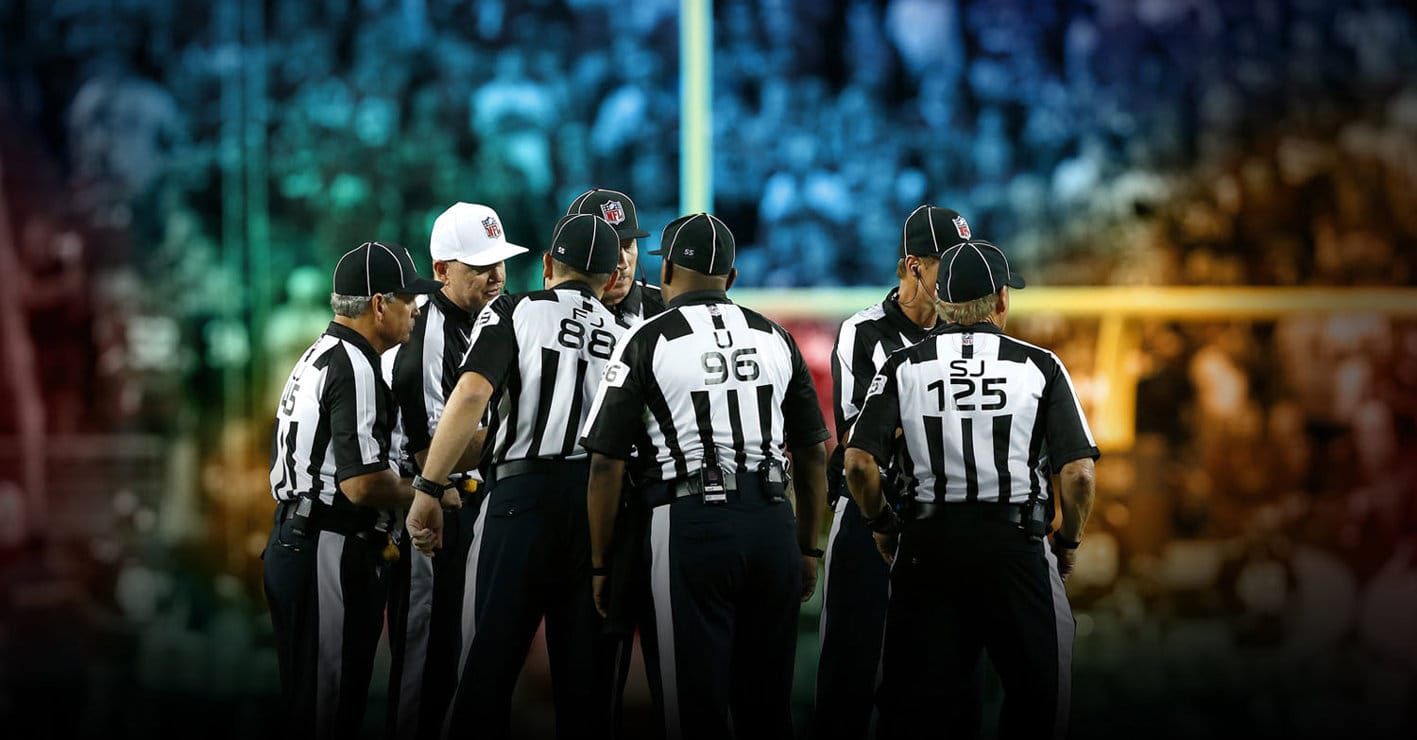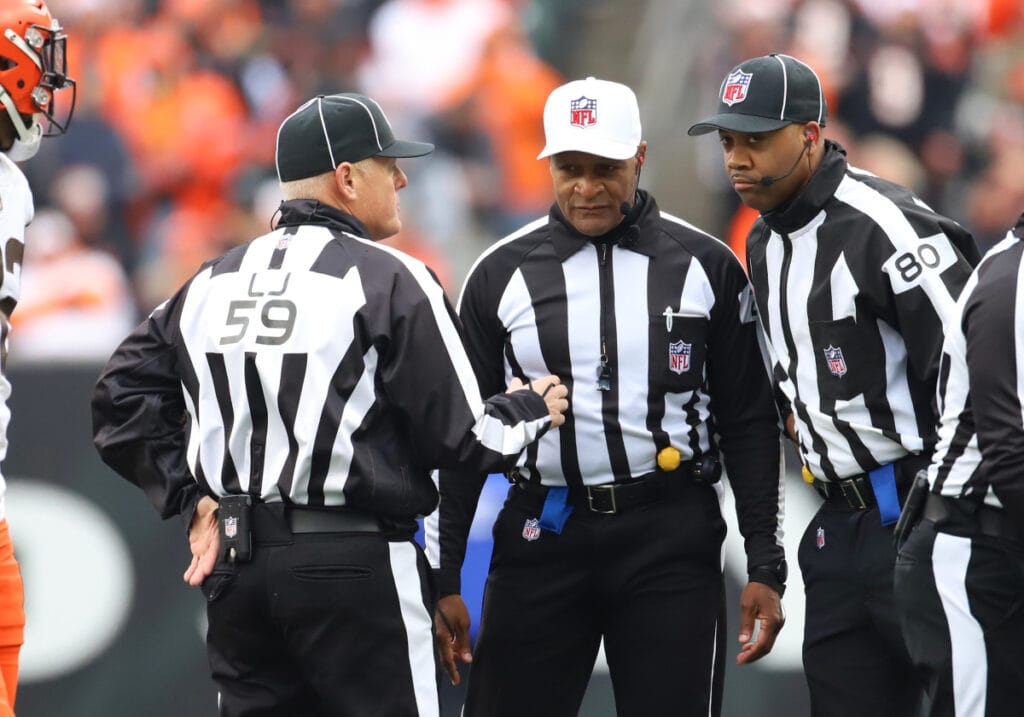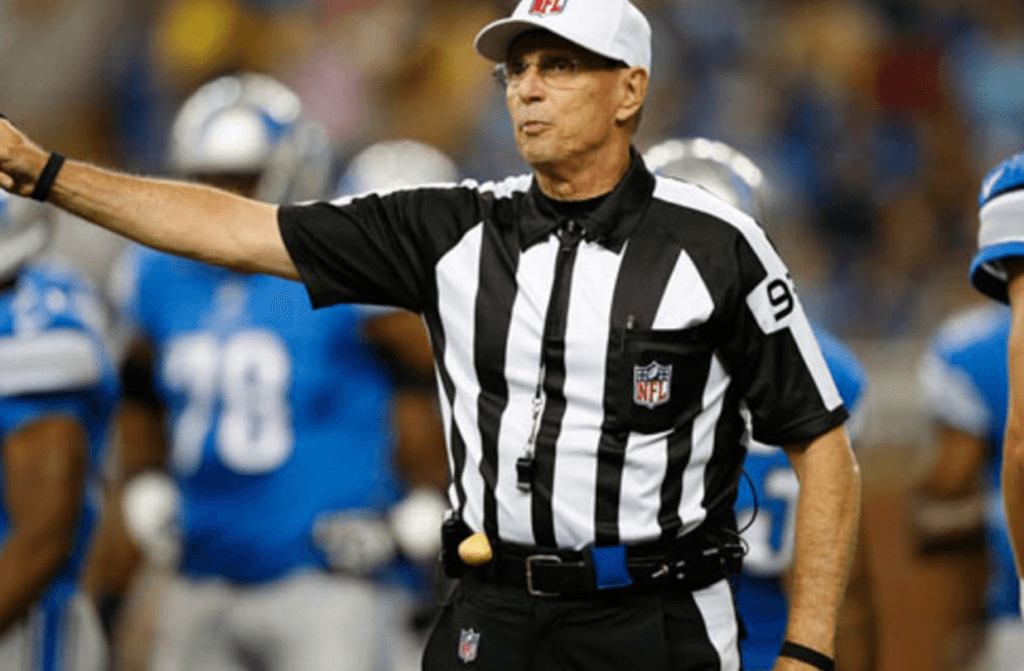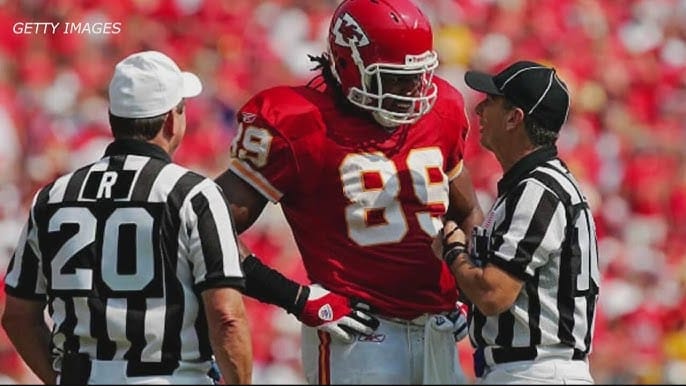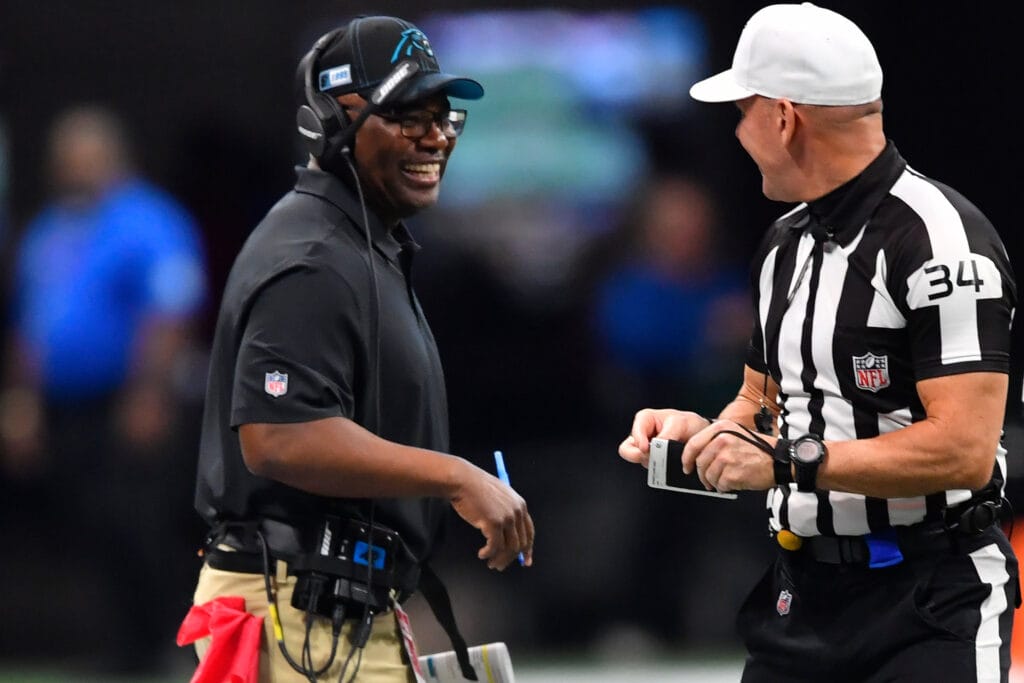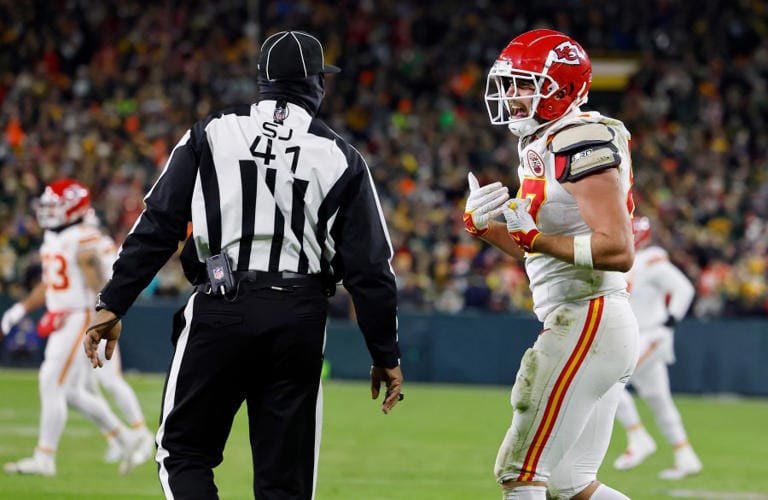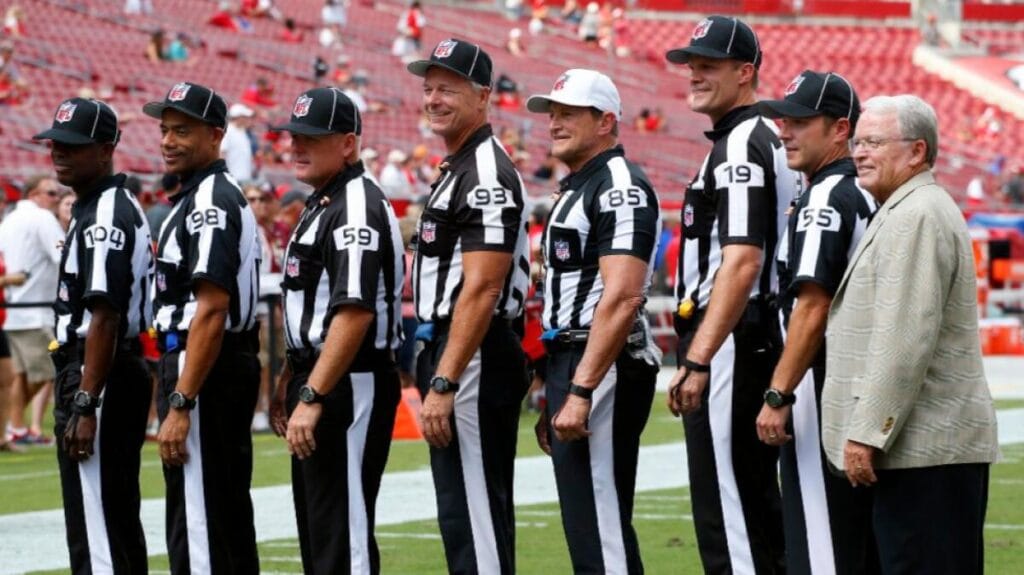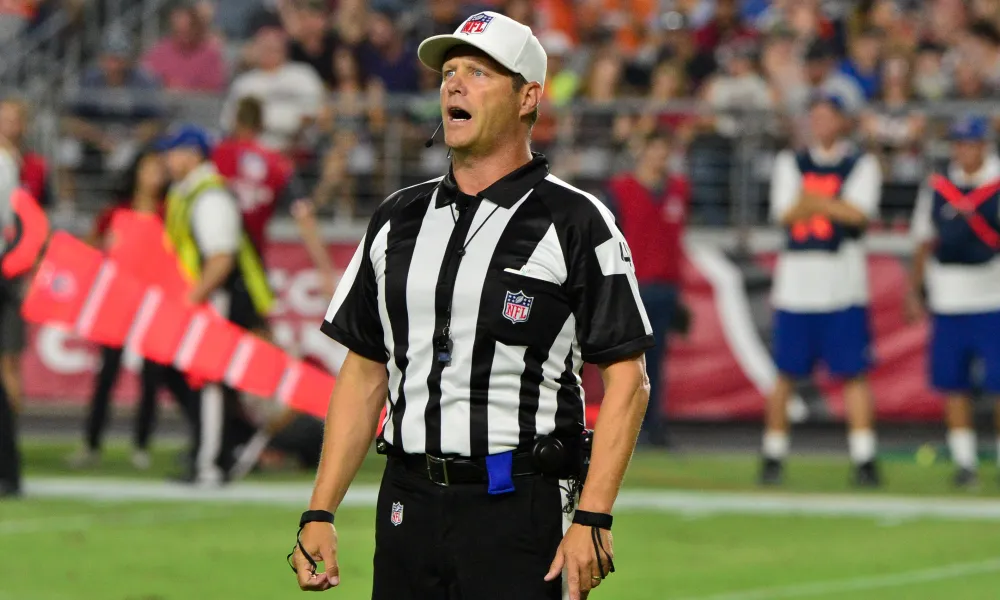Were you just watching a football game and wondering what those bold referee letters on the officials’ uniforms actually mean? The referee letters on football officials’ uniforms serve a very specific purpose: they help identify the role of each referee on the field. Football games have multiple officials, each with a designated position and responsibility. The letters on their uniforms indicate their specific role, helping players, coaches, and even fans understand who is making specific calls.
For instance, the official wearing the white hat, often seen with the letter “R,” is the head referee and the leader of the officiating crew. This referee is responsible for overseeing the game, making the final decisions on penalties, and announcing calls to the crowd.
Other referees on the field, such as the umpire or the line judge, have their responsibilities, and the referee letters make it easy to identify which official is responsible for which part of the game. These letters are especially important in professional leagues like the NFL, where multiple referees are required to manage the fast-paced and complex nature of the game.
Understanding Referee Positions and Their Letters
Each official on the football field has a unique role, and their position is indicated by a referee letter on their uniform. Let’s break down the most common positions and what each letter means:
1. Referee (R)
The Referee, marked with the letter “R,” is the lead official on the field. This referee is often the most visible to fans because they wear a white hat, while the other referees wear black hats. The Referee stands in the offensive backfield, roughly 10-12 yards behind the line of scrimmage.
- Key Responsibilities:
- Make sure the offense has the correct number of players on the field.
- Calls penalties for roughing the passer or roughing the kicker.
- Announces penalties to the crowd and ensures they are enforced properly.
- Oversees the game clock and is responsible for stopping or starting the clock during crucial moments of the game.
- Acts as the final authority on decisions, including reviewing close plays.
The Referee also works closely with coaches to communicate the reasoning behind specific calls, often making this position one of the most influential on the field.
2. Umpire (U)
The Umpire, designated by the letter “U,” is positioned on the defensive side of the ball, approximately 5-7 yards behind the defensive line. The Umpire is responsible for monitoring the actions of the offensive and defensive linemen.
- Key Responsibilities:
- Watches for holding or illegal blocking by offensive linemen.
- Ensures that no offensive lineman moves downfield on passing plays.
- Handles spotting the ball after each play and checks equipment for compliance.
- Assists the Referee in making calls, especially for illegal formations and false starts.
The Umpire plays a critical role in ensuring that the line of scrimmage is set correctly and that linemen are not breaking the rules pre-snap.
3. Down Judge (DJ)
The Down Judge (DJ), previously known as the Head Linesman, is responsible for tracking the progress of the ball along the sideline and ensuring that the chains are moved appropriately to mark first downs.
- Key Responsibilities:
- Watches the sideline for out-of-bounds plays and penalties like offsides.
- Works with the chain crew to ensure that first downs are properly marked.
- Monitors whether players on the offense or defense cross the line of scrimmage before the snap.
- Determines forward progress and the placement of the ball when the play is over.
The Down Judge plays a significant role in determining forward progress and keeping track of the downs, which is essential for the game’s flow.
4. Line Judge (LJ)
The Line Judge (LJ) is positioned on the opposite side of the Down Judge and is responsible for making pre-snap calls related to the defensive line and sideline.
- Key Responsibilities:
- Watches for offsides, encroachment, and neutral zone infractions.
- Monitors the quarterback and running backs, especially on passing and rushing plays.
- Assists with spotting the ball and determining forward progress.
- Often communicates with the coaches during the game regarding timeouts or challenges.
The Line Judge’s role is crucial for catching infractions before the ball is snapped, ensuring that both teams follow the rules.
5. Field Judge (FJ)
The Field Judge (FJ) stands 20 yards downfield and is responsible for monitoring the action in the defensive backfield, especially for penalties related to downfield blocking and pass interference.
- Key Responsibilities:
- Watches for pass interference or defensive holding on passing plays.
- Determines whether catches are made in bounds and whether players maintain control of the ball.
- Signals touchdowns when the ball crosses the goal line.
- Tracks the play clock and assists in making sure the game stays on schedule.
The Field Judge has a tough job, as they often have to make split-second decisions on whether a pass is complete or incomplete.
6. Side Judge (SJ)
Similar to the Field Judge, the Side Judge (SJ) watches the action from 20 yards downfield but is positioned on the opposite side of the field. They help monitor downfield plays, especially those that occur near the sidelines.
- Key Responsibilities:
- Works with the Field Judge to ensure pass interference and holding calls are properly made.
- Watches for sideline catches and ensures players stay in bounds.
- Signals touchdowns and assists with goal-line plays.
The Side Judge’s position is critical for ensuring fair play on deep passes and sideline routes.
7. Back Judge (BJ)
The Back Judge (BJ) is the deepest referee on the field and is positioned farthest away from the line of scrimmage. This referee is responsible for timing and keeping track of deep passes.
- Key Responsibilities:
- Tracks the 40-second and 25-second play clocks to avoid delay of game penalties.
- Watches for defensive pass interference and monitors receivers on deep routes.
- Helps with counting the defense to ensure there are no illegal substitutions.
The Back Judge also assists in making calls for long plays and ensuring that the game clock is managed properly.
Why Referee Numbers Matter on Game Day
Instant Identification in Reviews
When a play is challenged or buzzed for review, the replay team references the calling official by number. That makes it easy to pull the right angles, confirm mechanics, and coach positioning after the game.
Accountability and Season-Long Grading
Leagues grade every snap an official works, and those grades are tied to the number on the jersey. Strong marks lead to bigger late-season assignments and postseason crews, while trends flag training needs.
Clear Sideline Communication
Numbers keep conversations focused. Instead of “Hey ref,” coaches and captains can address the exact official who ruled on a hold or spot. That speeds answers and reduces heat in tense moments.
Scouting the Crew
Teams chart tendencies by crew and sometimes by individual. Knowing who wears which number helps coordinators plan route stems, blocking techniques, and fourth-down aggression to match an officiating profile.
Better for Fans and Broadcasts
Announcers can quickly credit the down judge or back judge who made a key call, and viewers learn who is working each sideline. Even in cold-weather layers, outer gear carries the number so everyone stays aligned.
Consistent From Pros to High School
Whether it is the NFL, college, or high school, the number system anchors responsibility. Mixed crews at bowls or showcases still use numbers to keep roles clear and evaluations clean.
Why Referees Are Essential to the Game
Football looks chaotic until you notice the quiet choreography the officials are running on every snap. They manage safety, enforce rules, control tempo, and keep the clock honest, all while navigating twenty-two athletes at full speed. The referee letters and numbers on their jerseys turn that choreography into a system. Players and coaches instantly know who owns the line, who owns the deep ball, and who to approach after a whistle for an explanation. Fans benefit too, because referee letters make it clear why a specific official blew a play dead or let an advantage continue.
On any down you can map the crew’s responsibilities by where those letters line up. Pre-snap, one group counts offense, another counts defense, and a third watches for illegal substitutions. At the snap, interior officials shift their eyes to hand fighting and holding, while deep officials read routes, leverage, and the quarterback’s eyes. After the play, specific letters own the dead-ball action, the spot, and the game clock. When the headset buzzes from the replay booth, the white hat coordinates the review but relies on the calling official’s angle and mechanics. With clear referee letters, there is no confusion about who saw what and from where.
This structure protects player safety and keeps the contest fair. It also helps communication. Instead of vague appeals to “the ref,” captains can quickly find the official with the angle that matters: “Line judge, did the tackle report eligible?” or “Back judge, did the receiver establish both feet?” That targeted dialogue cools temperature on the sideline and gets the right answer faster. Over a season, leagues grade those decisions by letter and number, which is how postseason crews get built and training points are assigned. The short version: the game stays orderly because referee letters divide the field into clear lanes of authority.
The Importance of Referee Letters in Football
Referee letters are a code that tells you who is doing what, where, and why. Once you learn it, the whole game opens up.
Decoding the letters on the field
The Referee (R) is the crew chief you hear on the mic. They manage game flow, announce penalties, and protect the quarterback. The Umpire (U) lives near the trenches, watching centers and guards for holds, chops, and illegal hands. On the sidelines, the Line Judge (LJ) and Down Judge (DJ) guard the line of scrimmage, watch for offsides and formation issues, and own the forward progress spot. Downfield, the Field Judge (FJ) and Side Judge (SJ) track intermediate routes and boundary footwork, while the Back Judge (BJ) monitors deep passes, the play clock, and contact beyond five yards. Some levels also use a Center Judge (CJ) to speed spotting and tempo. Those referee letters are not decoration; they are a live map of coverage zones and responsibilities.
How letters guide mechanics from snap to whistle
Before the snap, LJ and DJ confirm eligible numbers, count, and wideout alignment while U checks for leverage and stance legality inside. At the snap, U keys the point of attack for holds, while FJ, SJ, and BJ shift to route combinations and hand fighting. On run plays, wing officials work to the spot and control the sideline; on passes, deep letters bracket receivers and judge catch process. When the whistle blows, the crew with the spot letter marks the ball, R manages the clock signal, and BJ confirms the play clock reset. Because referee letters define these lanes, no two officials are guessing the same thing and missing something else.
Situational football through the lens of letters
Inside two minutes, BJ’s game-clock awareness is critical while R manages ten-second runoffs and timeout strategy. On goal-line plays, deep letters collapse toward the pylon and wings pinch the end line to judge break-the-plane moments. On special teams, BJ and deep wings read blocks in space and illegal formations, while R supervises fair-catch signals and roughing calls on the kicker or holder. In every scenario, referee letters assign the best angle to the right official so the big moments get the best possible look.
Why letters help viewers, coaches, and analysts
When you know the code, you can predict who will throw a flag and why. A tug at the top of a deep route is likely in the BJ’s world; a quick hold on an inside zone is usually U’s. Broadcasters use referee letters to credit the official who nailed a toe-tap or a tight spot. Coaches and analysts chart tendencies by crew and sometimes by letter to understand how a game might be called and to coach techniques that fit that profile.
Letters plus numbers equal accountability
The combination of referee letters and uniform numbers ties every judgment to a role and a person. That is how leagues grade film, correct mechanics, and elevate top performers to bigger assignments. It also gives players and coaches a reliable way to follow up on rulings without confusion. Learn the letters, and you will see a more organized, more understandable version of football—one where every whistle has a clear owner and every big decision has a clear process behind it.

